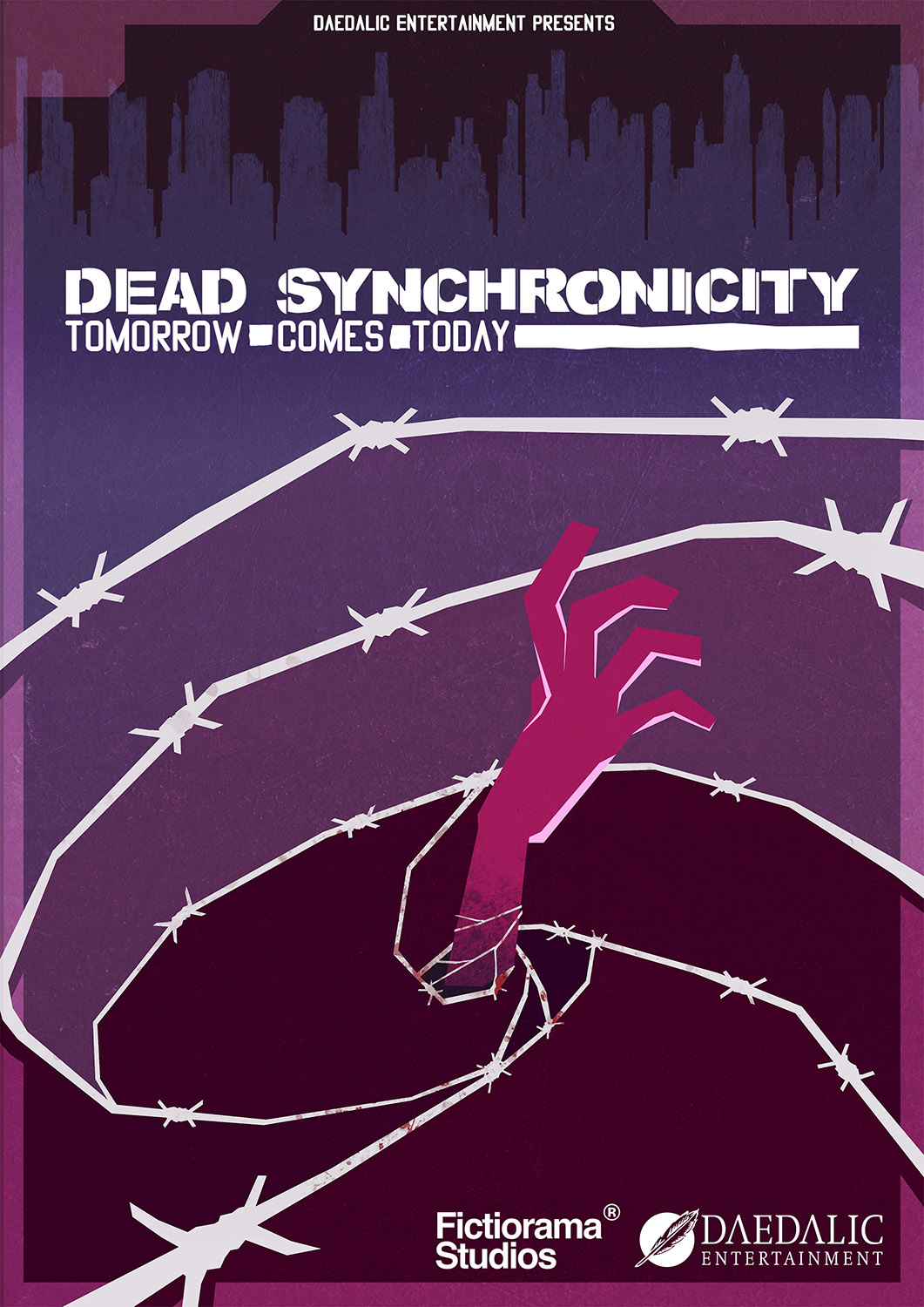Dead Synchronicity Review
The most striking thing about Dead Synchronicity is its art style, which sets out to look unique amongst other games. In a way it reminded me of the design of cartoons from the 1980’s. Dead Synchronicity: Tomorrow Comes Today isn't the game that’s going to win over those who don’t have much interest in this more deliberate kind of experience, but it’s still a strong.
To Be… What?
HIGH A great art style and vivid, genuinely upsetting writing…
LOW …Dragged down by frustrations that adventure games should’ve grown past by now.
WTF There’s no ending!
Dead Synchronicity: Tomorrow Comes Today starts in the dark. This changes in short order, as players are quickly roused from slumber and move into a better-lit room, but metaphorically, the game never leaves the shadows.
Despite having a title that might imply a quotidian type of zombie shootfest, Dead Synchronicity is actually a point-and-click adventure made with an eye towards preserving old-school design sensibilities.
In this respect, it succeeds handily while not succumbing to the temptation to make playing it as tedious as the older classics could sometimes be. One might even think that the hotspot-driven navigation in Dead Synchronicity would make it a chore to play on consoles, but the PS4 version employs a convenient control scheme, using triggers and buttons to get around the inherent sluggishness of a gamepad-controlled cursor.
Unfortunately, making the interface function is often the simplest part of an adventure game. Old-school point-and-clickers were often puzzle games of a particular sort, and it’s here where Dead Synchronicity trips up.
The puzzle logic is, at times, atrocious. The flow of events proceeds at a stop-and-start pace, with threads of solutions ending suddenly and without resolution, only for a needed item or a means of access to be arbitrarily dropped into players’ laps once a certain point in the story has been reached. It feels like the puzzles follow internal logic that seems obvious to people who made the game, but remains obtuse to anyone else. The result? The puzzles feel like roadblocks that actively encourage players to go to GameFAQs.
This is a great shame because most of Dead Synchronicity is vividly realized through its art and writing. There’s a bleak sort of beauty to the way it melds painterly backgrounds and environments with a somewhat flat style of character design. It also makes the most of a limited color palette to let a hopeless mood sink in and match the story.
And what a story it is. Dead Synchronicity‘s scenario is dark enough to make even Walking Dead fans squirm, and it pulls no punches. As an amnesiac named Michael, players explore the world following a mysterious apocalyptic event called “The Great Wave”. Outside of destroying the infrastructure and leaving civilization largely collapsed, the disaster has left mysterious plagues and even monsters rampant, with the survivors despairing in refugee camps.
The atmosphere infuses a depressive quality to what would otherwise be run-of-the mill adventure game tasks. Sure, players might need some valuables to trade for cash or information, but the valuables might have to be stolen off a dead man’s mutilated corpse, or planted to throw the heat off a pair of children that were made to commit murder…by the player. And the character with the information? A mentally ill prostitute forced into service. Yes, Dead Synchronicity goes places, and these places can be unpleasant, but engrossing, to explore.
Unfortunately, this leads me to the game’s biggest disappointment — that the story doesn’t end. As it turns out, Dead Synchronicity was planned as the first episode in a series. But, nearly two years on from its initial release, all players are left with is an infuriatingly abrupt stopping point. It’s such an sudden termination that it wouldn’t have been much worse had the game ended with “To Be Continued…”
In light of this incomplete content, the fact that it’s being be sold without this information up front feels disingenuous, and prevents me from being able to recommend it to anyone. Dead Synchronicity is dead on arrival. Rating: 3 out of 10
Disclosures: This game was developed by Fictiorama Studios and published by Daedalic Entertainment. It is currently available on PC,PlayStation 4,Xbox One, Android, and iOS. This copy of the game was obtained via publisher and was reviewed on the PS4. Approximately 8 hours of play were devoted to the single-player mode, and the game was completed.
Parents: According to the ESRB, this game’s rating is M, and contains violence, blood and gore, and sexual themes. The story features numerous scenes of violence and moral depravity, with some acts performed by the player character. Sexual abuse, torture, murder, are common in the scenario, though graphic representations are stylized or otherwise obscured.
Deaf & Hard of Hearing: The game features subtitles and voice acting in English.
Remappable Controls: The game contains no remappable controls.
Colorblind Modes: There are no colorblind modes in the game.
Josh Tolentino
Today he continues to write for a living while trying to turn his fledgling knowledge of Japanese into a marketable skill. He is Managing Editor of Japanese culture site Japanator and is a Contributing Editor for Destructoid. He has written for The Escapist, The California Literary Review, Esquire Magazine, and proudly holds the badge as the premier apologist for Star Trek Online.
Latest posts by Josh Tolentino (see all)
- Kentucky Route Zero: TV Edition Review - March 16, 2020
- Vampire: The Masquerade – Coteries Of New York Review - February 28, 2020
- Mechwarrior 5: Mercenaries Review - January 27, 2020
Genre: Adventure Developer: Fictiorama Studios Publisher: Daedalic Entertainment Released: April 2015 PC Requirements (recommended):
|
by flotsam
GB Reviews IndexStarpoint gemini 2 patch download. |
